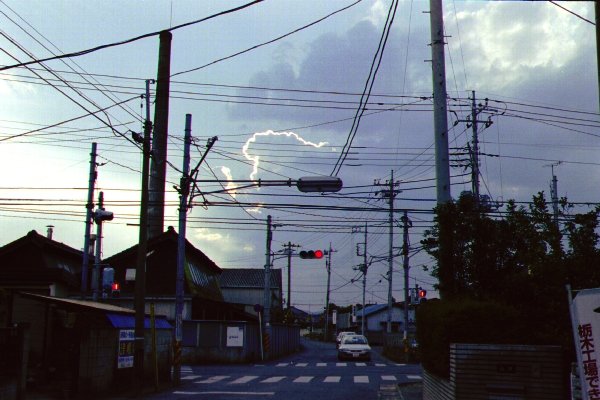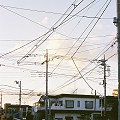
Sano - examples of real-life Japanese urban arrangementIn August 1999, Peter Evans reported on "an interesting Japanese response to the tasteful and fascinating-in-ways-I-never-could-have-guessed pages that branch off" from his website. Someone had asked him: >[W]here are the electric lines in all these Czech towns? I >see very few. Do they bury them underground? If so, is it >a common practice throughout the country, or just in >"historic" spots? This led to a discussion on various aspects of the typical Japanese town, including in particular the ugliness often produced by stringing wires in unfathomable quantities from utility poles, which again unfathomably appear to be required always on both sides of the road. I always find it difficult to reconcile the reality of this omnipresent ugliness with the gushing prose one finds on books devoted to subjects such as Japanese Design - here are the blurbs from the back of one, "Contemporary Japanese Design" by Siân Evans: "Why Japanese design is pre-eminent throughout the modern world -- How Japanese design combines respect for tradition with an awareness of the needs of the future." This seems to require an extremely narrow view of what "design" is. I wrote this box a long time ago: in particular the "urban arrangement" in the title was one attempt to say how the urban landscape gets the way it is without using the word that begins with 'P'. In the end, none of this makes any sense to me, so I gave up trying to write the definitive "explanation" of the problem. Instead, here's a collection of puzzles. |











